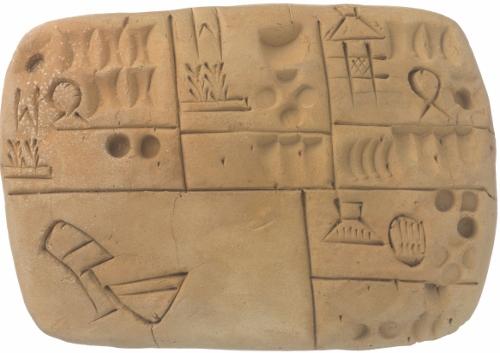The Emergence of Writing
As Uruk developed into a prospering city of previously unknown proportions, an ever more complex economic and administrative system was necessary to ensure its supply with goods such as items of food. At first, the people of Uruk inscribed clay tablets with pictograms depicting individual objects concisely. These stamp seals were used to indicate ownership of a certain article and to act as the first delivery notes. They enabled the customer to check whether the delivery was complete or not.


